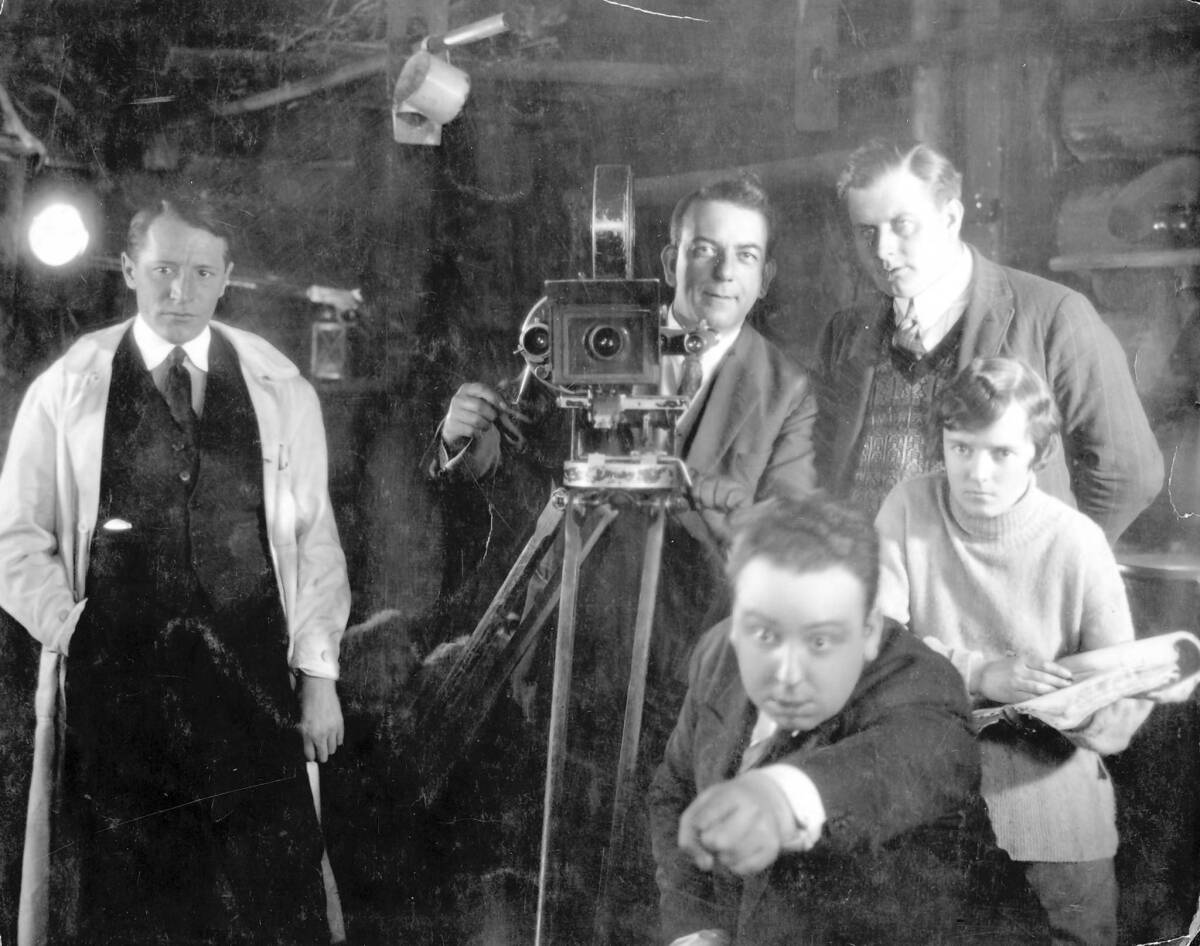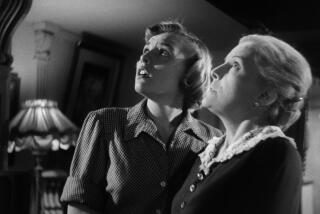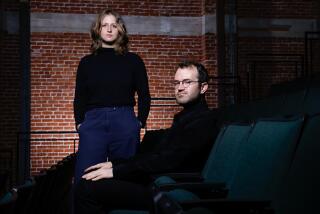Revisit Alfred Hitchcock’s classic films in screenings around L.A.

- Share via
Think of it as a Hitchcock-a-palooza.
It may be the summer of such blockbuster spectacles as “Man of Steel,” “The Lone Ranger” and “World War Z,” but it’s also the summer of movies by a real-life legend: Alfred Hitchcock.
His films are screening at several venues around L.A. in the coming weeks. Some of them will be familiar to audiences, others not.
On Tuesday at the Samuel Goldwyn Theater, the Academy of Motion Picture Arts and Sciences is showing both the sound and silent versions of his 1929 thriller “Blackmail.” The latter is part of the Hitchcock 9 project, the British Film Institute’s restoration of all nine surviving Hitchcock silent films.
PHOTOS: Three nights of Hitchcock
Then Wednesday at the Goldwyn the academy will screen the recently restored 1954 thriller “Dial M for Murder,” which Hitchcock shot in 3-D. The following evening at Oscars Outdoors in Hollywood, the academy and Film Independent are offering a symposium on iconic moments in costume design followed by a screening of 1958’s “Vertigo,” which last year was named the best movie ever made in a poll of 846 critics, programmers, academics and distributors by Sight & Sound magazine.
The academy and Los Angeles County Museum of Art are also collaborating on the Hitchcock 9 screening series, which opens June 27 with Hitchcock’s 1929 romantic melodrama “The Manxman” at the Bing Theater. British composer Stephen Horne will be providing live accompaniment of his new score.
Cinefamily at the Silent Movie Theatre is also drinking from the Hitchcock well this month, screening several of his sound films, including 1964’s “Marnie” and 1972’s “Frenzy.”
Randy Haberkamp, the academy’s managing director for programming, education and preservation, said that this expansive celebration of all things Hitchcock began after the British Film Institute finished its mammoth restoration of the nine silent movies.
“We contacted the BFI immediately and said, ‘We want to do something with those films in Los Angeles,’” he said.
PHOTOS: Alfred Hitchcock career snapshots
Last November the academy screened the restored 1927 romantic melodrama “The Ring” as “kind of a kick-off,” he said. “These nine films are playing San Francisco, New York and Los Angeles within a few weeks of each other and we thought it would be a great way to kick off a larger celebration. We got lucky that Warner Bros had [restored] ‘Dial M for Murder,’ and Film Independent came to us with the costume design idea. So we thought, ‘Let’s do it up big and celebrate.’”
Haberkamp has wanted to screen both versions of “Blackmail” since he saw the silent one some 25 years ago. “Blackmail” is considered the first British talkie, but Hitchcock also shot a silent version for theaters that were not then equipped to screen sound films.
“I was blown away by how different the silent version was and how good it was,” Haberkamp said. “For me it was the textbook-case scenario of somebody who was a complete master of silent film and taking that and turning the same movie into a really truly groundbreaking use of sound. It’s not that one is better than the other, but they are both fascinating examples of a master at the top of his game.”
The silent “Blackmail” will also screen again at LACMA on July 13.
It took the BFI “three years, lots of people and lots of money” to restore and preserve these early Hitchcock films, said Bryony Dixon, curator of silent film at the BFI National Archive in London.
In the case of Hitchcock’s first film, 1925’s “The Pleasure Garden,” the BFI was able to restore 20 minutes of footage that had been cut out of the British version of the film. But in the case of 1927’s “Easy Virtue,” the only print known to exist was 16 mm and in terrible condition.
“All we were able to do was copy it, clean it up and redo some of the intertitles,” Dixon said. “Then blow it up to 35 mm. I am hoping one day someone will find another print.”
The nine films in the series thrillers such as 1926’s “The Lodger: A Story of the London Fog,” which the director himself described as “the first true Hitchcock picture,” 1927’s “Downhill” and “Easy Virtue,” which both explore the “wrong man” themes he would return to time and again, and two comedies from 1928, “The Farmer’s Wife” and “Champagne.”
So why does Hitchcock still capture the imagination of modern audiences and filmmakers alike?
“I think there is something quite modern about his aesthetic, something contemporary in his cinematic style,” Horne said. “He understood you don’t need to give the audience too much information. I think he respected the audience. He knew that they would get things without it all being spelled out.”
For more information on the academy screenings, https://www.oscars.org on the LACMA series, https://www.lacma.org on the Cinefamily presentations, https://www.cinefamily.org.
Are you an aficionado of iconic Hollywood? Like us on Facebook and go to the Classic Hollywood landing page to get more Times coverage.
More to Read
Only good movies
Get the Indie Focus newsletter, Mark Olsen's weekly guide to the world of cinema.
You may occasionally receive promotional content from the Los Angeles Times.











